Mr Briney of Pialliway
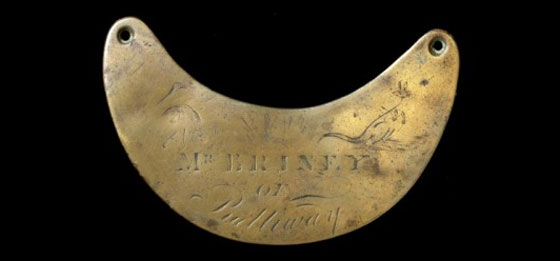
Are you a ‘Briney’?
Perhaps you know someone with that last name?
Maybe your family traces its roots back to the Tamworth area of the Liverpool Plains?
Or perhaps you are a budding detective and would relish the opportunity to solve an old mystery?
If so, you may be able to assist us in our search for information about an Aboriginal breastplate from our collection that was recently installed in the Museum’s Landmarks gallery. The information available for individual breastplates varies significantly and unfortunately, in this case, we are certain of little more about its origins than what is inscribed on the plate.
MR BRINEY
OF
Pialliway
From this inscription, we know that the breastplate was given to an Aboriginal man known as ‘Mr Briney’ and that it is associated with a place called Pialliway. But who was Mr Briney? And where or what was Pialliway?
In her book, ‘King Plates: A History of Aboriginal Gorgets’, Jakelin Troy concedes that she was unable to uncover any information about Mr Briney’s identity, though she does propose that ‘his evocative name suggests salt water’ and that ‘he may have spent some time crewing for a colonial ship.’ Yet despite these clues and the extensive research undertaken, the true identity of Mr Briney continues to elude us and so we turn to you for assistance.
Fortunately, we have had substantially more success in finding out about Pialliway – the place to which Mr Briney was clearly closely bound. What we found, is that the Pialliway inscribed on the breastplate almost certainly refers to a Piallaway of a slightly different spelling – a large pastoral property located south-west of Tamworth on New South Wales’ Liverpool Plains. Meaning ‘big talk’, Piallaway was named by the local Kamilaroi people who used the area as a gathering place for exchange of news and gossip. The name subsequently stuck among the first Europeans who arrived in the area, including Irish migrant John Martin Davis, who settled on Piallaway around 1836.
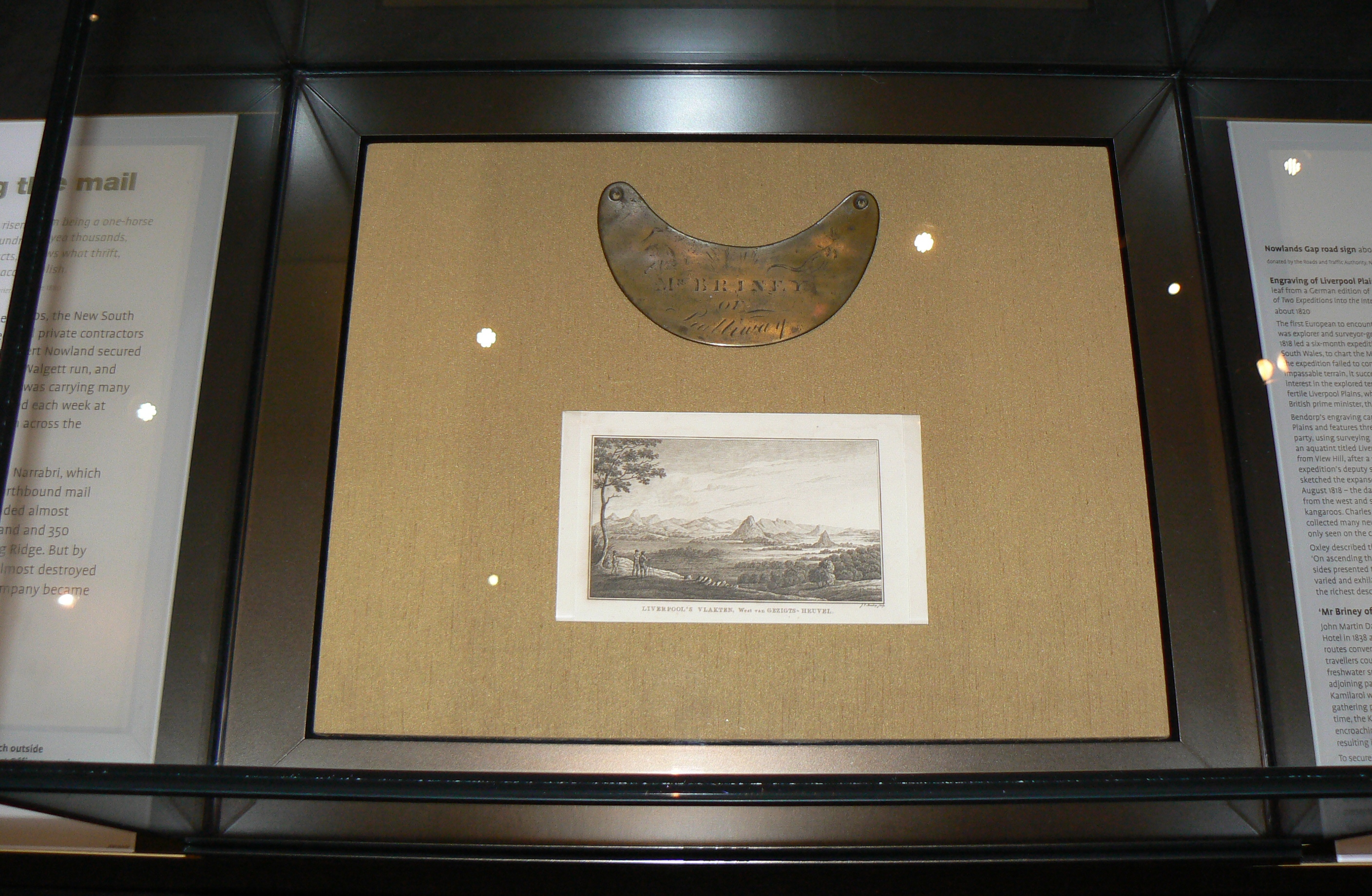
Photo by Karolina Kilian, National Museum of Australia
At the time, the Kamilaroi were being increasingly driven off their lands by the encroaching settlers and drifting onto stations, resulting in increased tensions and occasionally loss of life. To secure their cooperation in opening up the land and avoid open conflict, when pastoralists first took up their runs they often singled out a powerful Aboriginal man from the area and presented him with a breastplate bearing his name and the name of the fledgling property. Breastplates such as these were presented at Piallaway, as well as nearby Gunnedah, Breeza and Werris Creek, however the identity of those who bestowed them is not always known.
This indeed is the case with the Piallaway breastplate, though the aforementioned John Martin Davis is a strong candidate. Davis was not only one of the first settlers in the area, and one of the first pastoralists to run their stock on Piallaway, but importantly he is the only one of these pastoralists who is documented to have presented a breastplate to a local Kamilaroi tribal leader. Further, while some other settlers left the area due to conflict with the local Kamilaroi group, Davis remained and prospered, soon becoming the most influential figure in the development of the adjacent Currabubula township.
After reportedly exchanging his Piallaway run for the smaller adjoining Currabubula lot, Davis opened the Freemasons Arms Hotel – the first licenced hotel on the inland side of the Liverpool Range – in 1838. Located 20 miles south-west of Tamworth, the inn was ideally situated on the district’s only permanent water spring and at the entrance to Currabubula Pass. Marking a break in the Peel Range, which permitted easy passage of traffic between the Liverpool Plains and the Peel River Valley, the pass had been used by the local Kamilaroi people for centuries and since the beginning of white settlement in the area had become a focal point of tracks and road routes that converged at its entrance.
Commonly known as “Davis’ Hotel”, the popular establishment catered to the needs of the travelling public, including teamsters, bushrangers, travelling stock and later coaches, and from 1861 hosted the town’s first post office, with Davis as postmaster and a weekly horseback mail service to the stage coach station at Goonoo Goonoo. Credited with founding the township of Currabubula, Davis also built a butcher’s and a blacksmith’s shop adjacent to the hotel and carried a small stock of food essentials as a service to travellers. After his death from a horse fall in 1866, Davis’ son Robert and wife Sarah carried on the hotel business until 1937, thus exceeding a century of service to the travelling public. Located at 1 Davis Street, the extant Currabubula Hotel, as it is now known, was built by Robert in 1910 on the site of the original structure and was subsequently sold to another Davis (of no relation to the hotel’s founders).
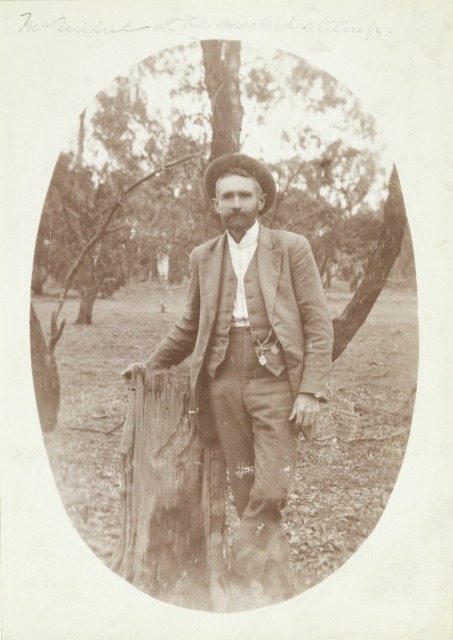
National Museum of Australia
While the breastplate’s origins remain unconfirmed, we do know that it was eventually collected by Edmund Milne – an amateur ethnographer and the deputy chief commissioner for NSW Railways & Tramways – and that it came into the Museum’s holdings as part of his extensive collection of Indigenous artefacts. The E Milne collection, assembled between about 1880 and 1917, was originally acquired by the Australian Institute of Anatomy and formed part of the National Ethnographic Collection, before being transferred to the National Museum in the 1980s. If you would like to find out more about the E Milne collection, check out this this article by National Museum curator David Kaus.
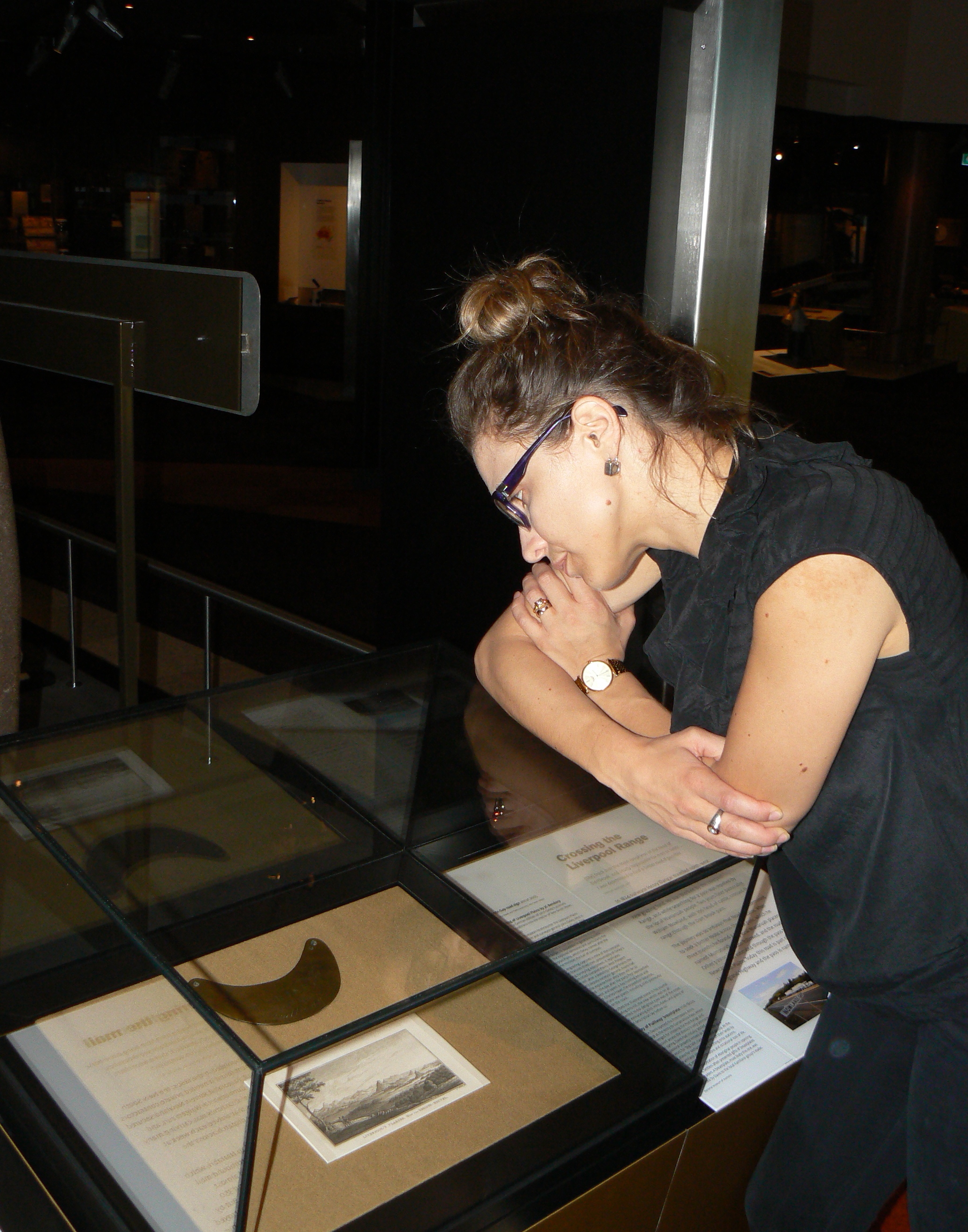
Photo by Jennifer Wilson, National Museum of Australia
Next time you are in Canberra, come and inspect the breastplate for yourself. You will find it displayed alongside an 1820 engraving of the Liverpool Plains by JC Bendorp in the Liverpool Plains story of the Museum’s permanent Landmarks: People and Places across Australia gallery. If a trip to Canberra is not on the cards, you can still find out much more about the history of Aboriginal breastplates via this web feature based on Troy’s book “King Plates: A History of Aboriginal Gorgets”.
And remember, if you know anything that might help us solve the mystery of the elusive Mr Briney and his surviving breastplate, please send us a comment or email me at karolina.kilian@nma.gov.au. We would love to hear from you.
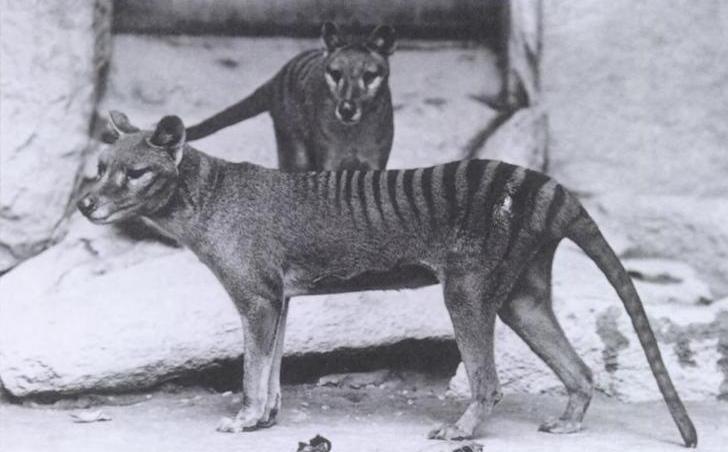
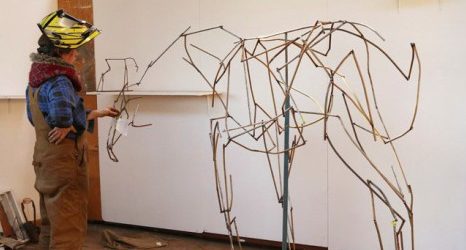

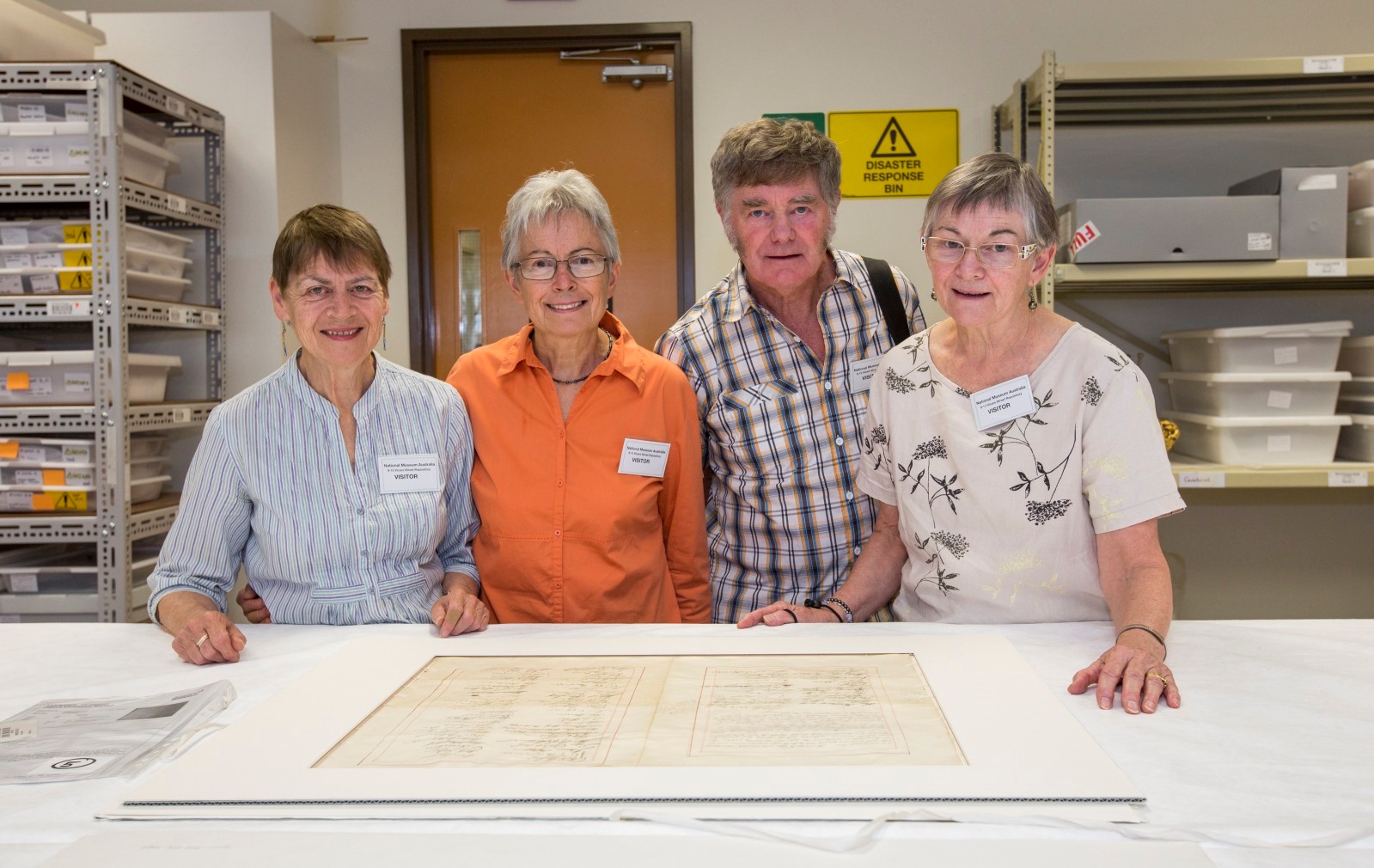
What a fascinating story. Hopefully there are people out there who can shed some more light on the breastplate and its history. Thanks Karolina.